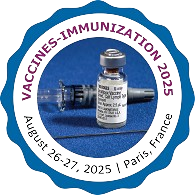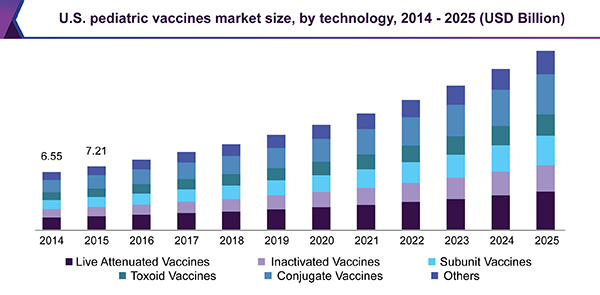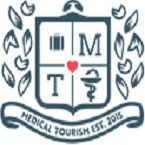Sessions/Tracks
Track 1: Vaccines
A vaccine is a biological preparation that provides active acquired immunity to a particular disease. A vaccine typically contains an agent that resembles a disease-causing microorganism and is often made from weakened or killed forms of the microbe, its toxins, or one of its surface proteins. Vaccines play an important role in keeping us healthy. They protect us from serious and sometimes deadly diseases like haemophilus influenzae type b (Hib) and measles. The challenge in immunogenic development consists in making a immunogen sturdy enough to chase away infection while not creating the individual seriously unwell. Thereto finish, researchers have devised differing types of vaccines
Track 2: Cancer, Malaria & TB Vaccines
Malaria continues to claim an estimated 2 to 3 million lives annually and to account for untold morbidity in the approximately 300 to 500 million people infected annually. Malaria is considered a re-emerging disease, due largely to the spread of drug-resistant parasite strains, decay of health-care infrastructure and difficulties in implementing and maintaining vector control programs in many developing countries. Four species of protozoan parasites cause malaria in humans: Plasmodium falciparum, P. vivax, P. malariae, and P. ovale. P. falciparum is responsible for the majority of deaths and most of the severe forms of disease, including cerebral malaria. 2 billion people latently infected with M. tuberculosis 5-10% infected people progress to disease 9 million new TB cases each year 1.5 million TB deaths each year Equivalent to 20 passenger aircraft crashes each day. TB is transmitted by adults with cavitatory disease, HIV infected people carry greater burden of disease. Highest risk of progression from TB infection to active disease, and worst TB morbidity and mortality, compared to older children and adults.
Track 3: HIV Vaccines
The most important breakthroughs of the past century involved the development of vaccines to protect against viruses: smallpox, polio, hepatitis, human papillomavirus (HPV), and even chickenpox. But one virus remains elusive to those seeking to create a vaccine to guard against it: HIV. Getting vaccinated early, before sexual exposure, is also effective in preventing certain types of STIs. Vaccines are available to prevent human papillomavirus (HPV), hepatitis A and hepatitis B.
Track 4: Combination & Conjugate Vaccines
Increasingly, more diseases are becoming vaccine preventable, but maintaining community and provider acceptance demands that the number of injections doesn’t increase. Combination conjugate vaccines represent an inevitable and important advance. This paper reviews the efficacy and safety of combination conjugate vaccines, including immunological mechanisms underlying interactions among vaccine epitopes, the role of immunological memory, and correlates of immunity. Specific attention is given to the experience with combination vaccines against each of Haemophilus influenzae type b, Streptococcus pneumoniae and Neisseria meningitidis. The implications of these findings for different communities are discussed, key areas for further research identified and implications for post-licensure monitoring addressed.
Track 5: Vaccines against Infectious Diseases
Infectious diseases are disorders caused by organisms such as bacteria, viruses, fungi or parasites. Many organisms live in and on our bodies. They're normally harmless or even helpful, but under certain conditions, some organisms may cause disease. Vaccines are a way of artificially activating the immune system to protect against infectious disease. Of those various diseases, maybe none is a lot of common than infectious diseases, that area unit outlined by UN agency as any morbific organism that may be unfold directly or indirectly from one person to a different. Stimulating immune responses with an infectious agent is known as immunization.
Track 6: DNA & Synthetic Vaccines
Scientists take many approaches to designing vaccines against a microbe. These choices are typically based on fundamental information about the microbe, such as how it infects cells and how the immune system responds to it, as well as practical considerations, such as regions of the world where the vaccine would be used. A DNA vaccine against a microbe would evoke a strong antibody response to the free-floating antigen secreted by cells, and the vaccine also would stimulate a strong cellular response against the microbial antigens displayed on cell surfaces. The DNA vaccine couldn’t cause the disease because it wouldn’t contain the microbe, just copies of a few of its genes. In addition, DNA vaccines are relatively easy and inexpensive to design and produce. Inactivated vaccines can be composed of either whole viruses or bacteria, or fractions of either. Fractional vaccines are either protein-based or polysaccharide-based.
Track 7: Travel & Edible Vaccines
Travel vaccines are recommended to provide protection against diseases endemic to the country of origin or of destination. They are intended to protect travellers and to prevent disease spread within and between countries. There is no single vaccination schedule that fits all travellers. Each schedule must be individualized according to the traveller’s previous immunizations, health status and risk factors, the countries to be visited, the type and duration of travel, and the amount of time available before departure.
Edible vaccines hold great promise as a cost-effective, easy-to-administer, easy-to-store, fail-safe and sociocultural readily acceptable vaccine delivery system, especially for the poor developing countries. It involves introduction of selected desired genes into plants and then inducing these altered plants to manufacture the encoded proteins.
Track 8: Paediatric Vaccination
Immunization against diseases such as Polio, Tetanus, Diphtheria, and Pertussis saves the lives of approximately three million children each year. Immunization also prevents many more millions from suffering debilitating illness and lifelong disability. Globally, approximately 132 million babies need to be fully immunized each year. In order to meet this need, immunization systems must have adequate resources, trained and motivated staff, and ample vaccines and syringe supplies.
Track 9: Vaccines for Immune Mediated Diseases
Patients with immune-mediated inflammatory diseases (IMID) such as RA, IBD or psoriasis, are at increased risk of infection, partially because of the disease itself, but mostly because of treatment with immune-modulatory or immunosuppressive drugs. In spite of their elevated risk for vaccine-preventable disease, vaccination coverage in IMID patients is surprisingly low. Although the reduced quality of the immune response in patients under immunotherapy may have a negative impact on vaccination efficacy in this population, adequate humoral response to vaccination in IMID patients has been demonstrated for Hepatitis B, Influenza and Pneumococcal vaccination.
Track 10: Vaccines against Drugs
Drug addiction is a serious problem worldwide. One therapy being investigated is vaccines against drugs of abuse. The antibodies elicited against the drug can take up the drug and prevent it from reaching the reward centres in the brain. Few such vaccines have entered clinical trials, but research is going on apace. Many studies are very promising and more clinical trials should be coming out in the near future.
Track 11: Vaccines & Autism
Vaccine efficacy refers to the ability of vaccines to bring about the intended beneficial effects on vaccinated individuals in a defined population under ideal conditions of use. The potential benefits of an effective vaccine – e.g. promotion of health and well-being, and protection from illness and its physical, psychological and socioeconomic consequences must be weighed against the potential risk of an adverse event following immunization (AEFI) with that vaccine. Vaccine-associated risk is the probability of an adverse or unwanted outcome occurring, and the severity of the resulting harm to the health of vaccinated individuals in a defined population following immunization with a vaccine under ideal conditions of use.
Track 13: Geriatric Immunization
As we get older, our immune system tends to weaken over time, putting us at higher risk for certain diseases. This is why, in addition to seasonal flu (influenza) vaccine and Td or Tdap vaccine (tetanus, diphtheria, and pertussis), the adults 60 years or older should take Pneumococcal vaccines, which protect against pneumococcal disease, including infections in the lungs and bloodstream (also recommended for adults younger than 65 years who have certain chronic health conditions) and Zoster vaccine, which protects against shingles.
Track 14: Vaccines for Pregnant Women & Neonates
Immunization during pregnancy has the potential to protect the mother and the infant against vaccine preventable diseases. New born infants are at high-risk for significant illness and death from certain infectious diseases because their immune system has not fully developed. One aim of vaccinating pregnant women is to increase the amount of maternal antibody (proteins that fight disease) transferred to infants, potentially protecting them from infectious disease.
Track 15: Vaccines for Unconventional Diseases
It is interesting to have a look on activities of drug developers in area of antibody-inducing vaccines directed against non-infectious diseases and some unconventional indications. These vaccines have been in most cases developed so far as treatment vaccines. This is in opposite to infectious diseases vaccines used as prophylactic vaccines. Despite promising late stage candidates, with some very recent failures, there is still no antibody-inducing vaccine approved targeting other than microorganism antigens (i. e targeting self-antigens , addiction molecules antigens and others. It is interesting to have a look on activities of drug developers in area of antibody-inducing vaccines directed against non-infectious diseases and some unconventional diseases.
Track 16: Animal Models & Clinical Trials
The development of human vaccines continues to rely on the use of animals for research. Regulatory authorities require novel vaccine candidates to undergo preclinical assessment in animal models before being permitted to enter the clinical phase in human subjects. Substantial progress has been made in recent years in reducing and replacing the number of animals used for preclinical vaccine research through the use of bioinformatics and computational biology to design new vaccine candidates. However, the ultimate goal of a new vaccine is to instruct the immune system to elicit an effective immune response against the pathogen of interest, and no alternatives to live animal use currently exist for evaluation of this response.
Track 17: Animal & Plant Derived Vaccines
It has been about 30 years since the first plant engineering technology was established. Although the concept of plant-based pharmaceuticals or vaccines motivates us to develop practicable commercial products using plant engineering, there are some difficulties in reaching the final goal: to manufacture an approved product. At present, the only plant-made vaccine approved by the United States Department of Agriculture is a Newcastle disease vaccine for poultry that is produced in suspension-cultured tobacco cells. The progress toward commercialization of plant-based vaccines takes much effort and time, but several candidate vaccines for use in humans and animals are in clinical trials. This review discusses plant engineering technologies and regulations relevant to the development of plant-based vaccines and provides an overview of human and animal vaccines currently under clinical trials.
Track 18: Vectors, Adjuvants & Delivery Systems
A vaccine adjuvant is an ingredient of a vaccine that helps create a stronger immune response in the patient’s body. In other words, adjuvants help vaccines work better. Some vaccines made from weakened or dead germs contain naturally occurring adjuvants and help the body produce a strong protective immune response. However, most vaccines developed today include just small components of germs, such as their proteins, rather than the entire virus or bacteria. These vaccines often must be made with adjuvants to ensure the body produces an immune response strong enough to protect the patient from the germ he or she is being vaccinated against. Aluminum gels or aluminum salts are vaccine ingredients that have been used in vaccines since the 1930s. Small amounts of aluminum are added to help the body build stronger immunity against the germ in the vaccine. Aluminum is one of the most common metals found in nature and is present in air, food, and water. The amount of aluminum present in vaccines is low and is regulated by the U.S. Food and Drug Administration (FDA).
Track 19: Vaccine Production & Development
Vaccine development is an activity that focuses on a variety of technological initiatives and applied research, which enhance and promote improved systems and practices for vaccine safety. In the past year, the unprecedented Ebola disease outbreak galvanized research and industry response and as we continue to search for solutions, we must review the lessons learned in order to overcome the current challenges. Vaccine development is a long, complex process, often lasting 10-15 years and involving a combination of public and private involvement. The current system for developing, testing, and regulating vaccines developed during the 20th century as the groups involved standardized their procedures and regulations.
Track 20: Cellular Immunology & Latest Innovations
The response to pathogens is composed by the complex interactions and activities of the large number of diverse cell types involved in the immune response. The innate immune response is the first line of defence and occurs soon after pathogen exposure. It is carried out by phagocytic cells such as neutrophils and macrophages, cytotoxic natural killer (NK) cells, and granulocytes. The subsequent adaptive immune response includes antigen-specific defence mechanisms and may take days to develop. Cell types with critical roles in adaptive immunity are antigen-presenting cells including macrophages and dendritic cells. Antigen-dependent stimulation of various cell types including T cell subsets, B cells, and macrophages all play critical roles in host defence.
Track 21: Fish & Poultry Vaccines
Vaccines developed for aquaculture have reduced antibiotic use in fish production. Currently, vaccines are available for some economically important bacterial and only few vaccines for viral diseases and no vaccine developed for fish parasites and fungus. Major limitations in fish vaccine developments are less understanding of fish immunology, many vaccines unlicensed, not cost effective (expensive) and stressful on administration. Research are needed to review on the present status of fish vaccination for controlling fish diseases, and shows the needs and directions for future investigations.
Vaccination plays an important part in the health management of the poultry flock. There are numerous diseases that are prevented by vaccinating the birds against them. A vaccine helps to prevent a particular disease by triggering or boosting the bird’s immune system to produce antibodies that in turn fight the invading causal organisms.
Track 22: Antibodies: Engineering & Therapeutics
Antibodies, also called immunoglobulins, are large Y-shaped proteins which function to identify and help remove foreign antigens or targets such as viruses and bacteria. Antibodies are produced by specialized white blood cells called B lymphocytes (or B cells). When an antigen binds to the B-cell surface, it stimulates the B cell to divide and mature into a group of identical cells called a clone. The mature B cells, called plasma cells, secrete millions of antibodies into the bloodstream and lymphatic system. Every different antibody recognizes a specific foreign antigen. This is because the two tips of its “Y” are specific to each antigen, allowing different antibodies to bind to different foreign antigens. Antibodies are produced by the immune system in response to the presence of an antigen. Antibody engineering has become a well-developed discipline, encompassing discovery methods, production strategies, and modification techniques that have brought forth clinically investigated and marketed therapeutics. The realization of the long-standing goal of production of fully human monoclonal antibodies has focused intensive research on the clinical employment of this potent drug category.
Track 23: Current Research & Future Challenges
Vaccine development remains challenging because of the highly sophisticated evasion mechanisms of pathogens for which vaccines are not yet available. Recent years have witnessed both successes and failures of novel vaccine design and the strength of iterative approaches is increasingly appreciated. These combine discovery of novel antigens, adjuvants and vectors in the preclinical stage with computational analyses of clinical data to accelerate vaccine design. Reverse and structural vaccinology have revealed novel antigen candidates and molecular immunology has led to the formulation of promising adjuvants. Gene expression profiles and immune parameters in patients, vaccines and healthy controls have formed the basis for bio-signatures that will provide guidelines for future vaccine design.

















